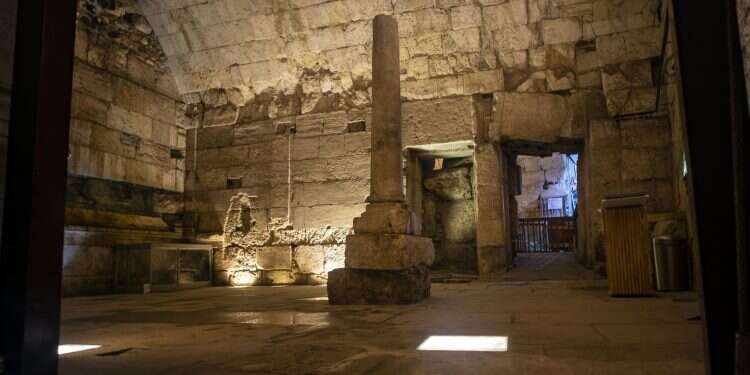Archaeologists from the Israel Antiquities Authority on Thursday unveiled impressive underground constructions – what may have been a 2,000-year-old city council building – dating from the end of the Second Temple period located in the Old City of Jerusalem, just a few hundred meters from its modern counterpart.
Follow Israel Hayom on Facebook and Twitter
The grand structure is a new feature on the revamped Western Wall Tunnels Tour, which allows tourists to visit the millennia-old city that exists in a time warp under today's thriving capital.
With a luxurious lobby, parts of which the IAA has already revealed, the edifice includes a sophisticated fountain and was likely used for banquets and other gatherings of the local elite or to receive foreign dignitaries within walking distance of the Temple.
"It is a truly magnificent building, one of the most splendid public buildings we know of dating from the Second Temple period," said Shlomit Weksler-Bdolah, an archaeologist at the IAA.
The Second Jewish Temple was built in the 6th century BCE, after the Babylonians destroyed the first one in 586 BCE. The original iteration was a modest replica of King Solomon's magnificent building, although King Herod undertook a massive construction project – which can still be seen today in the 144,000 square meter (1.55 million square feet) Temple Mount platform. The Romans destroyed the temple that stood at its heart in 70 CE.
The Western Wall is the only vestige of an outside retaining wall. Above the Wall stretches the Temple Mount.
At the time of the Temple, the banquet hall, partly unveiled on Thursday, was divided into several segments, and "very, very impressive ritual baths" were dug there, Weksler-Bdolah said, adding that it was still difficult to understand the timeline and motivations for construction.
According to the excavations, the site was no longer in use in the 7th century, shortly after the Muslim conquest. From this period, the inhabitants of Jerusalem lived at street level, a few meters above the underground hall.
Subscribe to Israel Hayom's daily newsletter and never miss our top stories!
The newly discovered pieces, characterized by their sophistication, show how keen the rulers of Jerusalem were to leave their mark on the city, especially in the area near the Temple Mount, according to Weksler-Bdolah.
This article was first published by i24NEWS.




